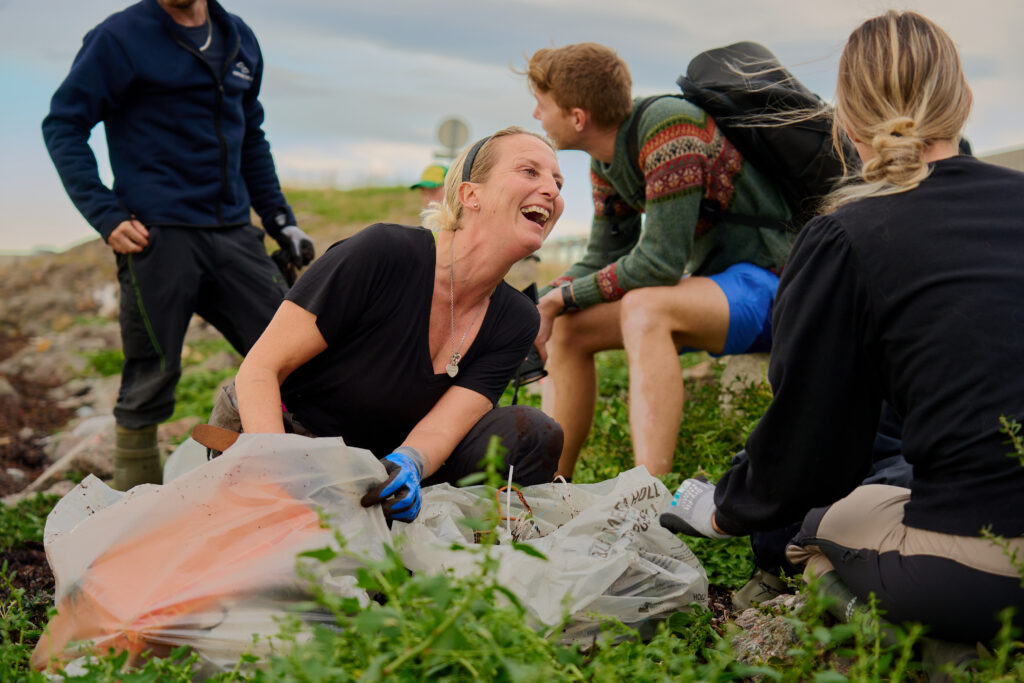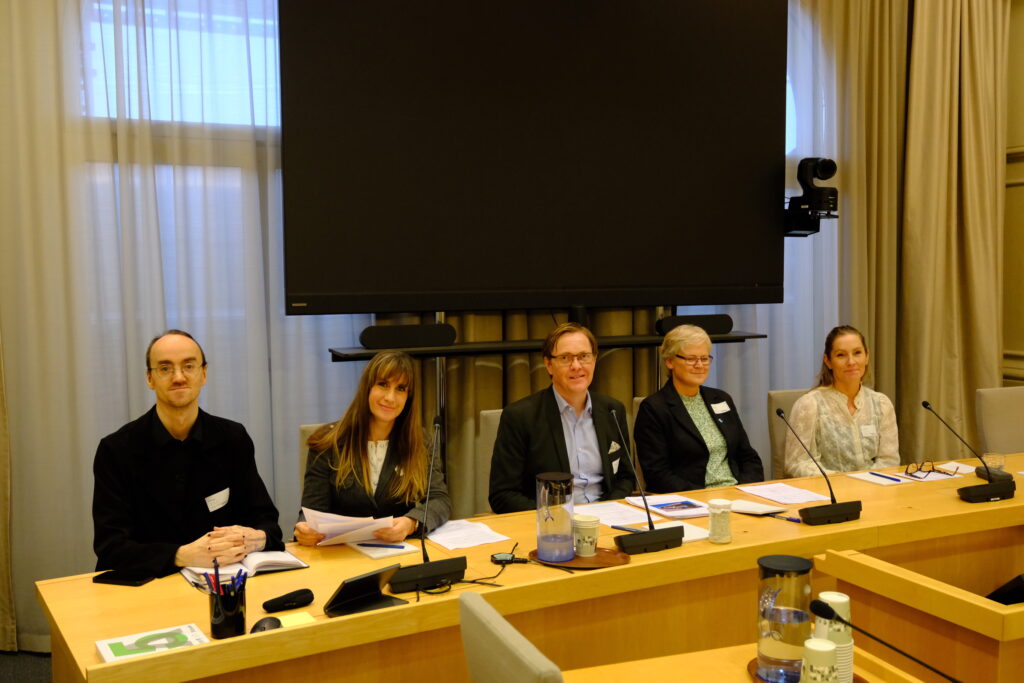Keep Norway Beautiful in Alaska: Inspiring people, plastic bottles, humpback whales and bear spray
The Arctic offers significant challenges when it comes to carrying out volunteer cleanups. Many of these became evident when Keep Norway Beautiful travelled to Sitka, Alaska, to strengthen the collaboration within Arctic Cleanup, gain deeper insight into cleanups in Arctic and near-Arctic regions, and lay the groundwork for the years ahead.
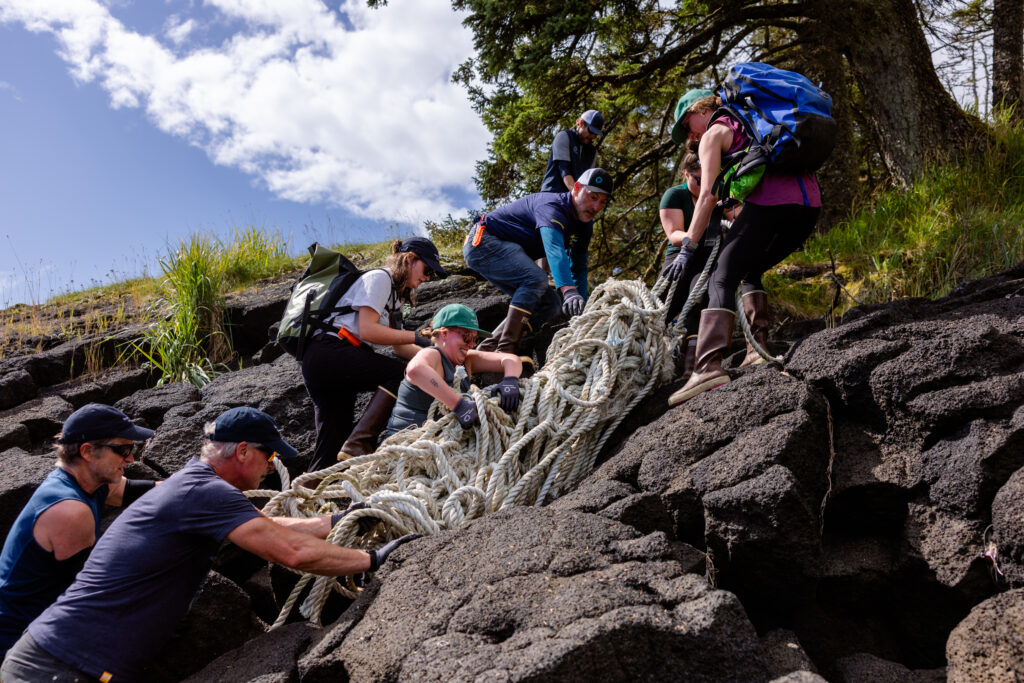 Caitlin Blaisdell / Ocean Conservancy
Caitlin Blaisdell / Ocean ConservancyIn August of this year, Keep Norway Beautiful travelled to Sitka, a small town surrounded by the ocean south in Alaska, in connection to the Arctic Cleanup project. The project contributes to prevention of littering in the Arctic through cleanups, data collection and network building, with a focus on local communities and organisations. Keep Norway Beautiful manages the project together with the American organisation Ocean Conservancy.
CEO in Keep Norway Beautiful, Cecilie Lindvall Wendelboe highlights the importance of the collaboration:
After years of joint efforts against litter in the Arctic, it is deeply rewarding to see the results of our collaboration. Working with Ocean Conservancy is both important and inspiring to us. Litter is a global challenge as much as a local one, and they are a partner we truly admire
With a great collaboration and an exciting schedule, we had a solid starting point for the days in Sitka. In addition, Sitka truly showed off its beauty, and we enjoyed the surroundings under clear skies and warm sunshine.
Uniting people from near and far
The highlight of the fieldwork in Sitka was the joint cleanup that took place on the beautiful Kruzof Island off the coast of Sitka. The cleanup was organised as a Flagship Cleanup, meaning one of Ocean Conservancy’s larger cleanup events this year, in connection with the 40th anniversary of the International Coastal Cleanup.
The cleanup brought together over 30 participants from 10 different organisations; Keep Norway Beautiful, Ocean Conservancy, Sitka Sound Science Center, Sitka Tribe of Alaska, Sitka Conservation Society, City of Sitka, Aleut Community of St. Paul Island Tribal Government, Representative Rebecca Himschoot and staff, commercial fishers, and local volunteers.
Kristina Tirman is Senior Manager for Arctic Marine Debris in Ocean Conservancy, and was in charge of the cleanup. She says:
In Sitka and across Alaska, the ocean is central to our way of life. That’s why it was so meaningful to bring together partners from around the world for the 40th International Coastal Cleanup. Together, we’re helping to protect the people, wildlife and communities that are deeply connected to these waters and threatened by plastic pollution.
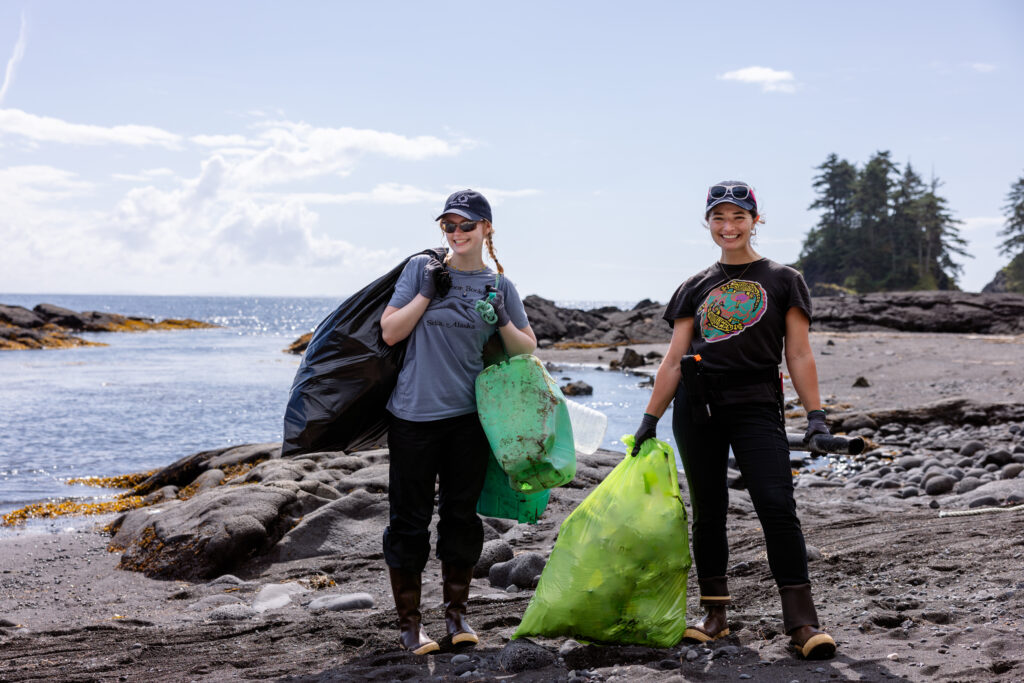
Challenging circumstances don’t stop volunteers in the Arctic
The cleanup turned out to be a great example of what volunteer cleanups in Arctic regions can look like. Before we could even begin doing the cleanup, we had to endure nearly an hour-long boat ride, followed by a strenuous journey in smaller boats to reach shore. The beach we cleaned was long and covered in large driftwood logs – needless to say, not the easiest terrain to navigate. The beach faces open water, and the wind and ocean currents in the area bring large amounts of marine debris ashore. Rope, plastic bottles, buoys, and a general abundance of plastic were found.
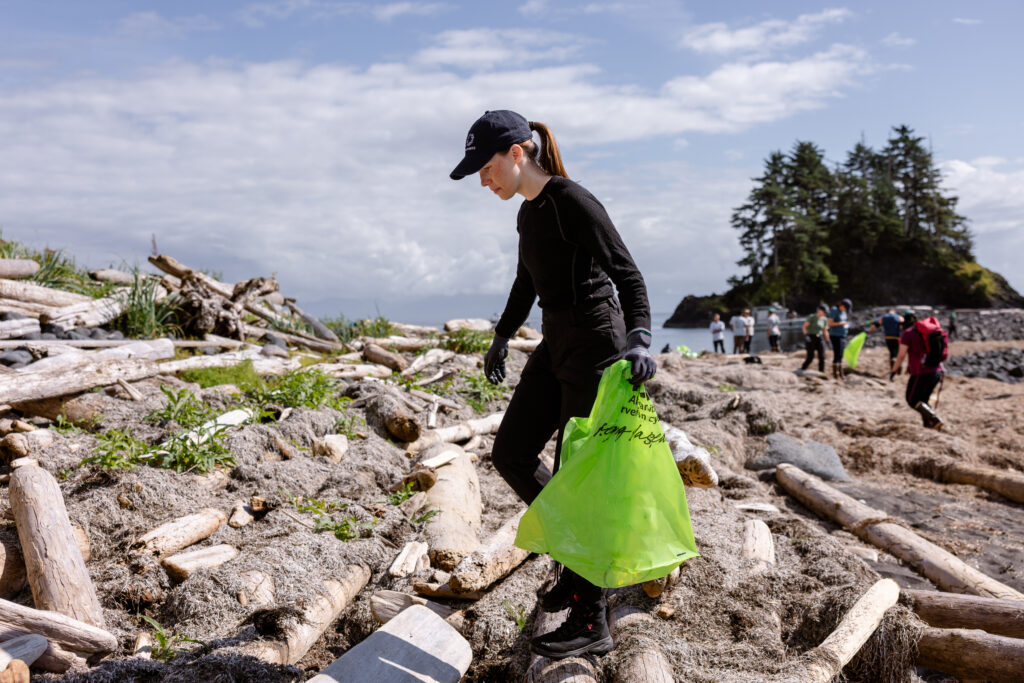
An added (and for us, new) challenge was the fact that Kruzof Island is home to hundreds of brown bears. Thus, the packing list for the cleanup included not only gloves and bags but also bear spray. After the cleanup, all the collected trash was transported along the beach and loaded onto the boats with help from the many volunteers. Once back in Sitka, the waste was driven to the local waste management facility, where it will be sorted before being shipped out of the state for recycling and disposal.
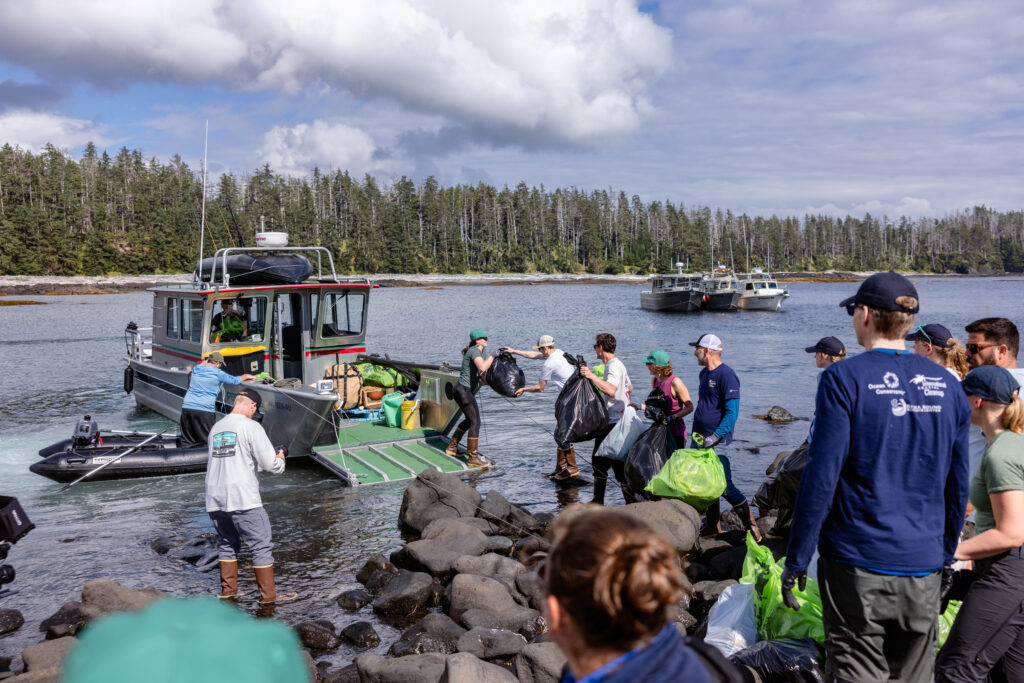 Caitlin Blaisdell / Ocean Conservancy
Caitlin Blaisdell / Ocean ConservancyDespite the many challenges related to transport, cleanup logistics, and waste management, the cleanup was a huge success. This demonstrated the incredible drive, commitment, and expertise of the cleanup community in Arctic and near-Arctic regions.
Connecting people and nature
The trip to Sitka also offered several incredible nature experiences, many of which took place on the way to and from the cleanup site. Humpback whales, sea lions, seals, eagles, puffins, otters and much more created a beautiful backdrop for the journey. In addition, we were lucky to be given a tour of the Sitka Sound Science Center, which works to gather and share scientific knowledge about their local environment. These experiences brought us even closer to the beautiful and vulnerable Arctic nature that we together are trying to protect.
An important part of Arctic Cleanup is the network it creates across people, organisations and communities that all fight to prevent litter in the Arctic. Being in Sitka and meeting all the volunteers and community members was meaningful and valuable to us.
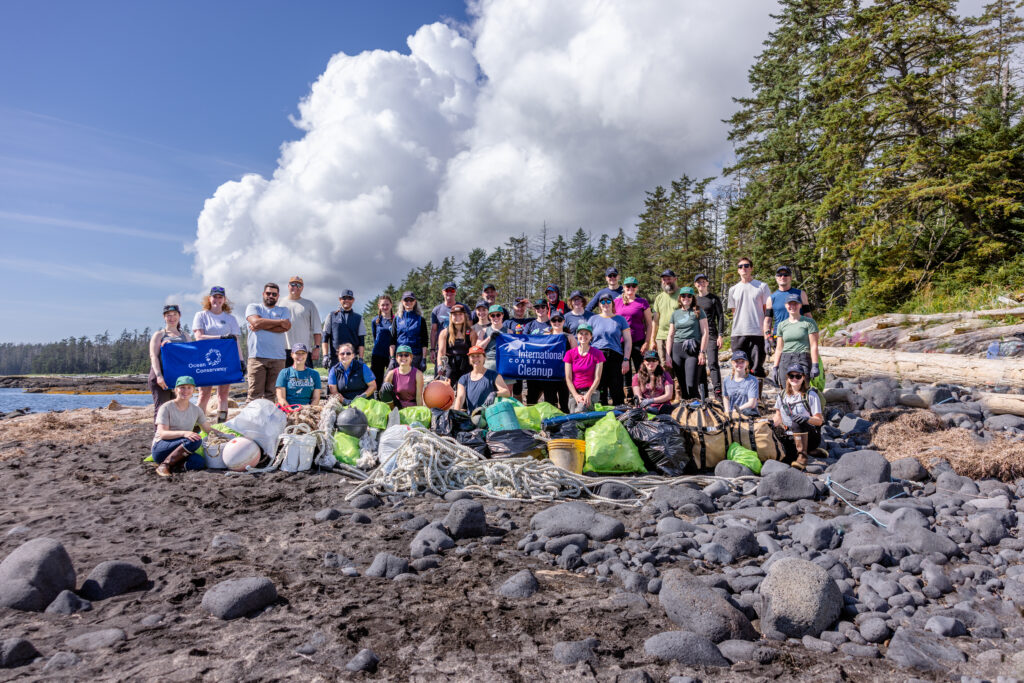 Caitlin Blaisdell / Ocean Conservancy
Caitlin Blaisdell / Ocean ConservancyThe road ahead for Arctic Cleanup
Arctic Cleanup was established in 2021 and has since grown from a pilot project to become a full-scale project in Norway, Alaska, Greenland and Iceland. Previously this year, we published a report that summarises the first four years of Arctic Cleanup. In addition, the project is anchored under the Arctic Council, which in 2025 changed leadership from Norway to Denmark.
2025 is therefore the perfect year to take Arctic Cleanup one step further, based on the knowledge gained from the first years, and to evolve the project together with the new chair of Arctic Council. This work truly began during the trip to Sitka, when Keep Norway Beautiful and Ocean Conservancy had the opportunity to meet in person. Ingeborg Rønning is the project manager of Arctic Cleanup, and she looks forward to the next years:
I am excited to see where Arctic Cleanup is and what it looks like in a year from now, and I look forward to work even more with the local communities and organisations across the Arctic to come one step closer to our goal of a litter-free Arctic.
Arctic Cleanup is funded by The Norwegian Ministry of Climate and Environment and Ocean Conservancy.
